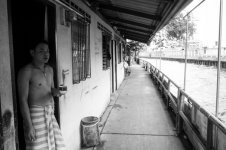raytoei@gmail.com
Veteran
Hi,
i think i finally figured out difference between RAW and JPG,
I am a film shooter so bear with me on my simple understanding,
please point me to the right direction if my assumption aren't
accurate:
I shoot in R-D1 on JPG, which has worked fine so far.
One issue I have is overexposure with the skies.
In JPG, there isn't enough dynamic range to do burining of the
skies (in Silver efx) without having weird artifact appearing, the
problems happens in RAW as well but much less so.
is this correct ?
raytoei
i think i finally figured out difference between RAW and JPG,
I am a film shooter so bear with me on my simple understanding,
please point me to the right direction if my assumption aren't
accurate:
I shoot in R-D1 on JPG, which has worked fine so far.
One issue I have is overexposure with the skies.
In JPG, there isn't enough dynamic range to do burining of the
skies (in Silver efx) without having weird artifact appearing, the
problems happens in RAW as well but much less so.
is this correct ?
raytoei



